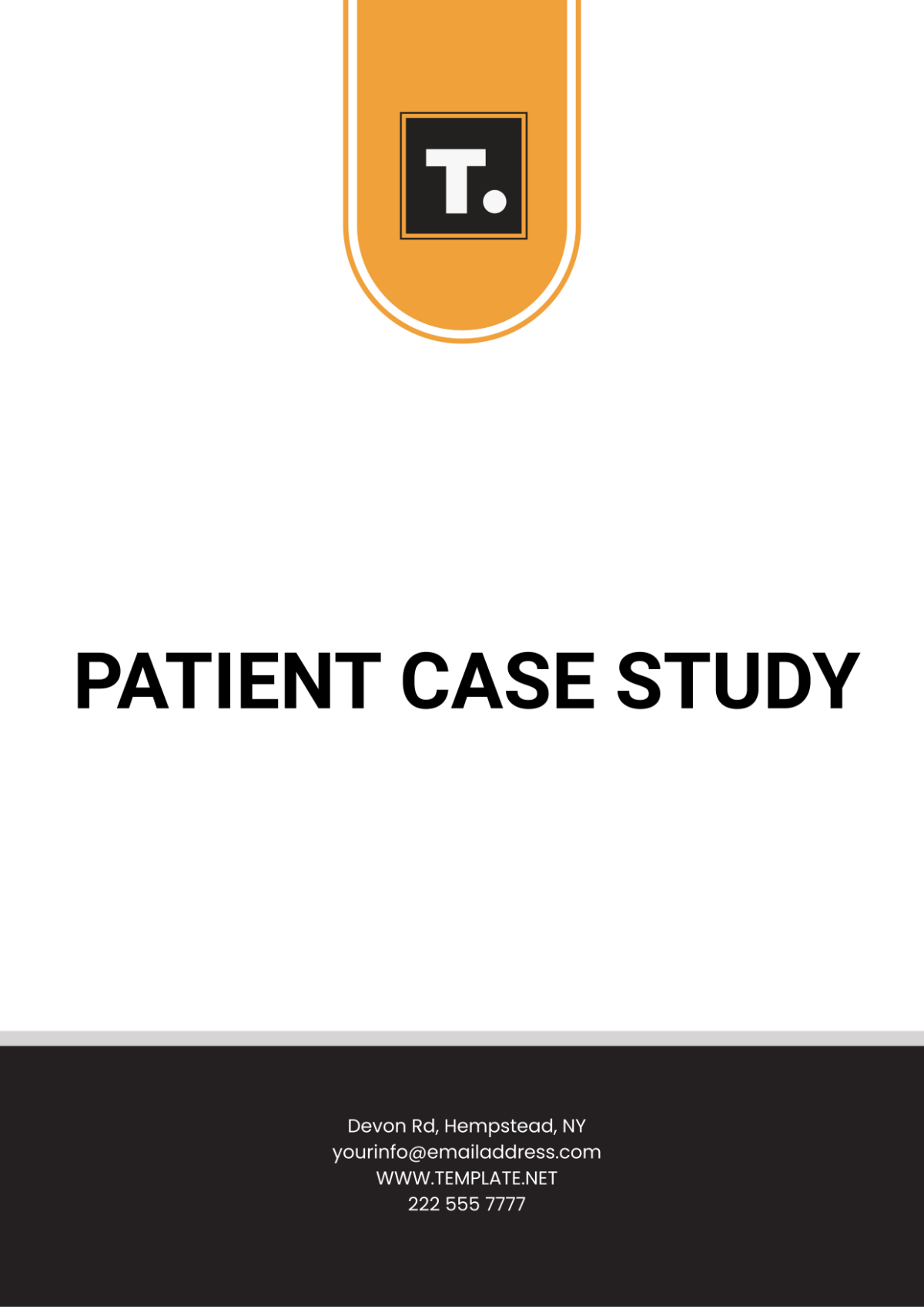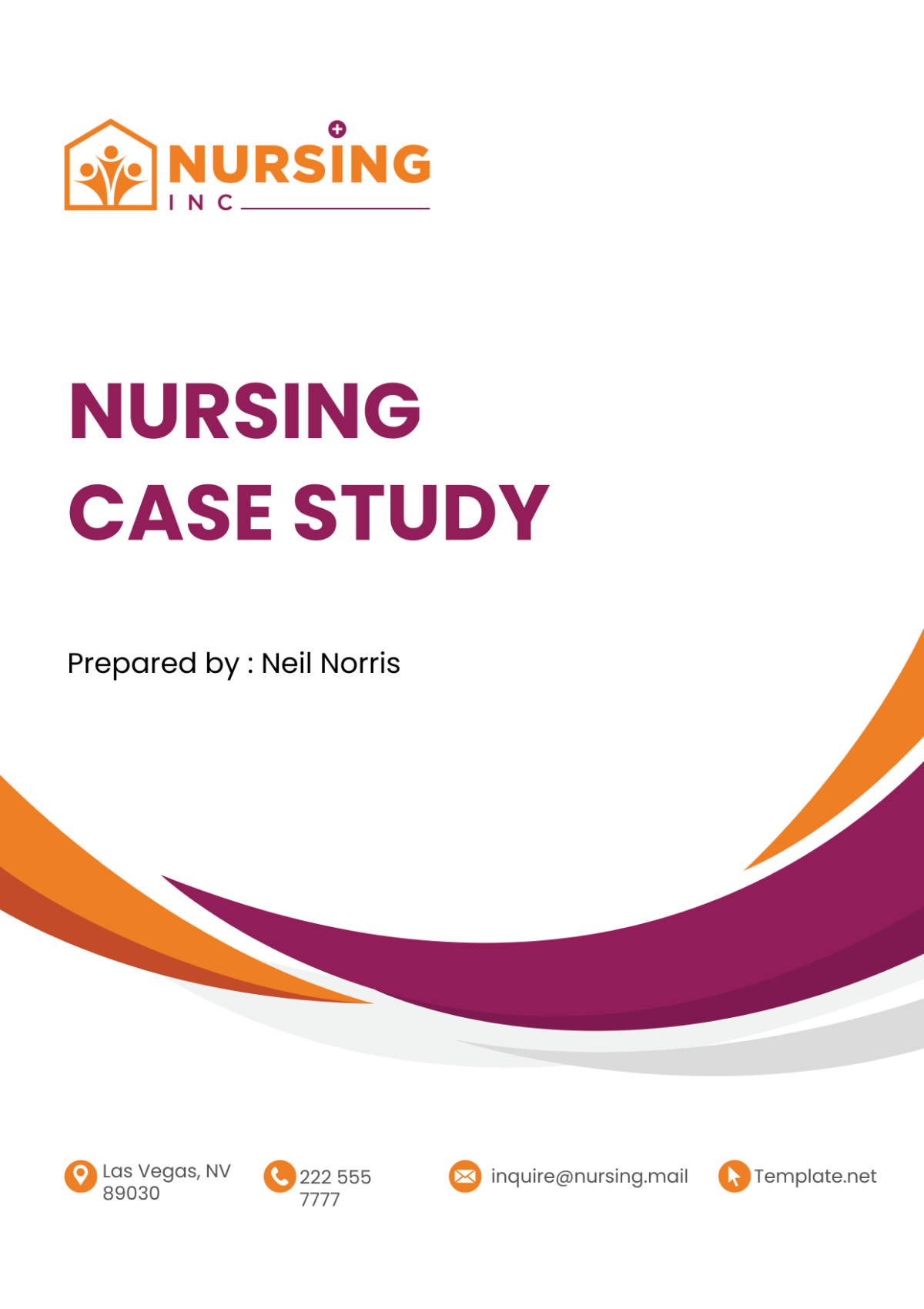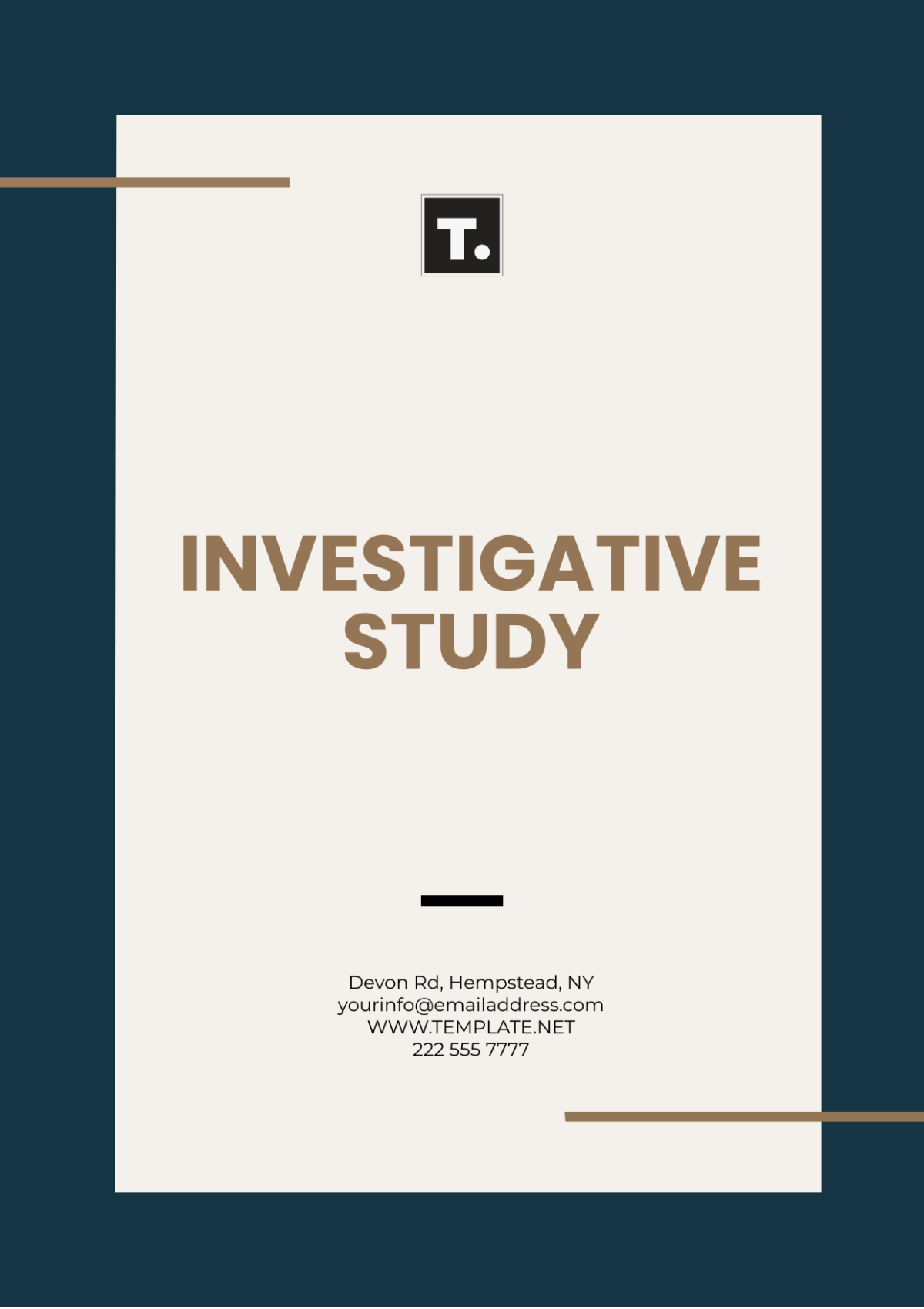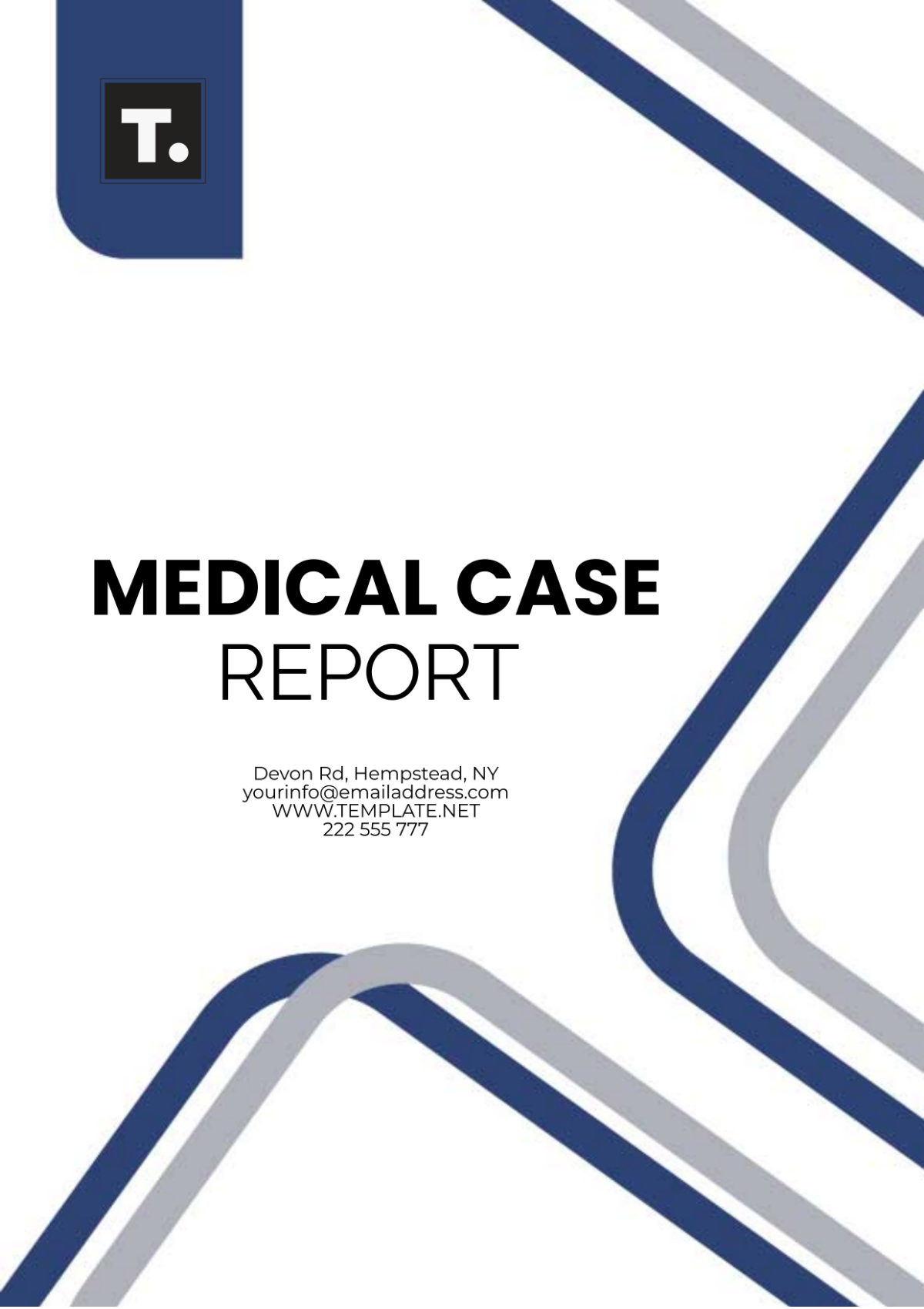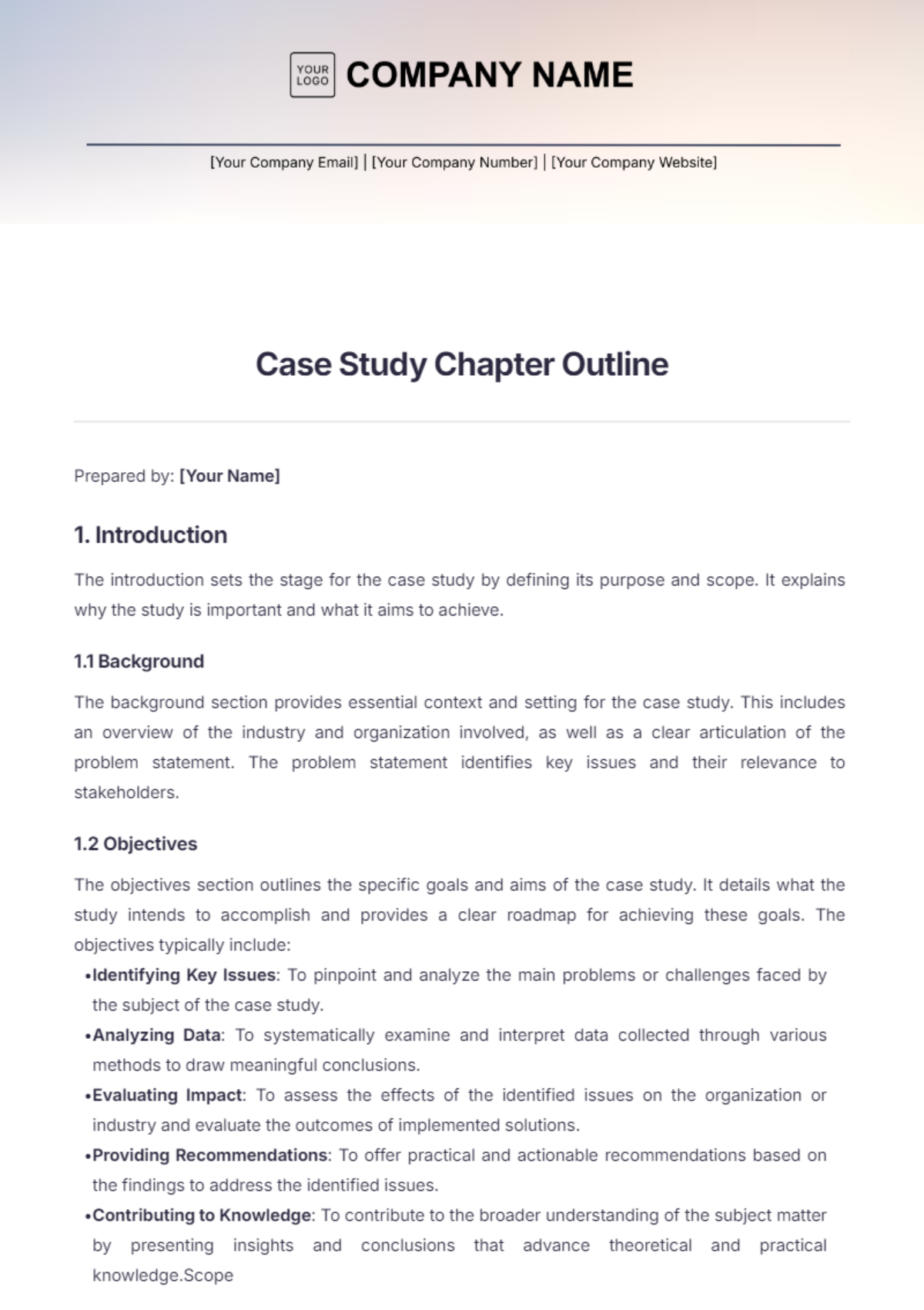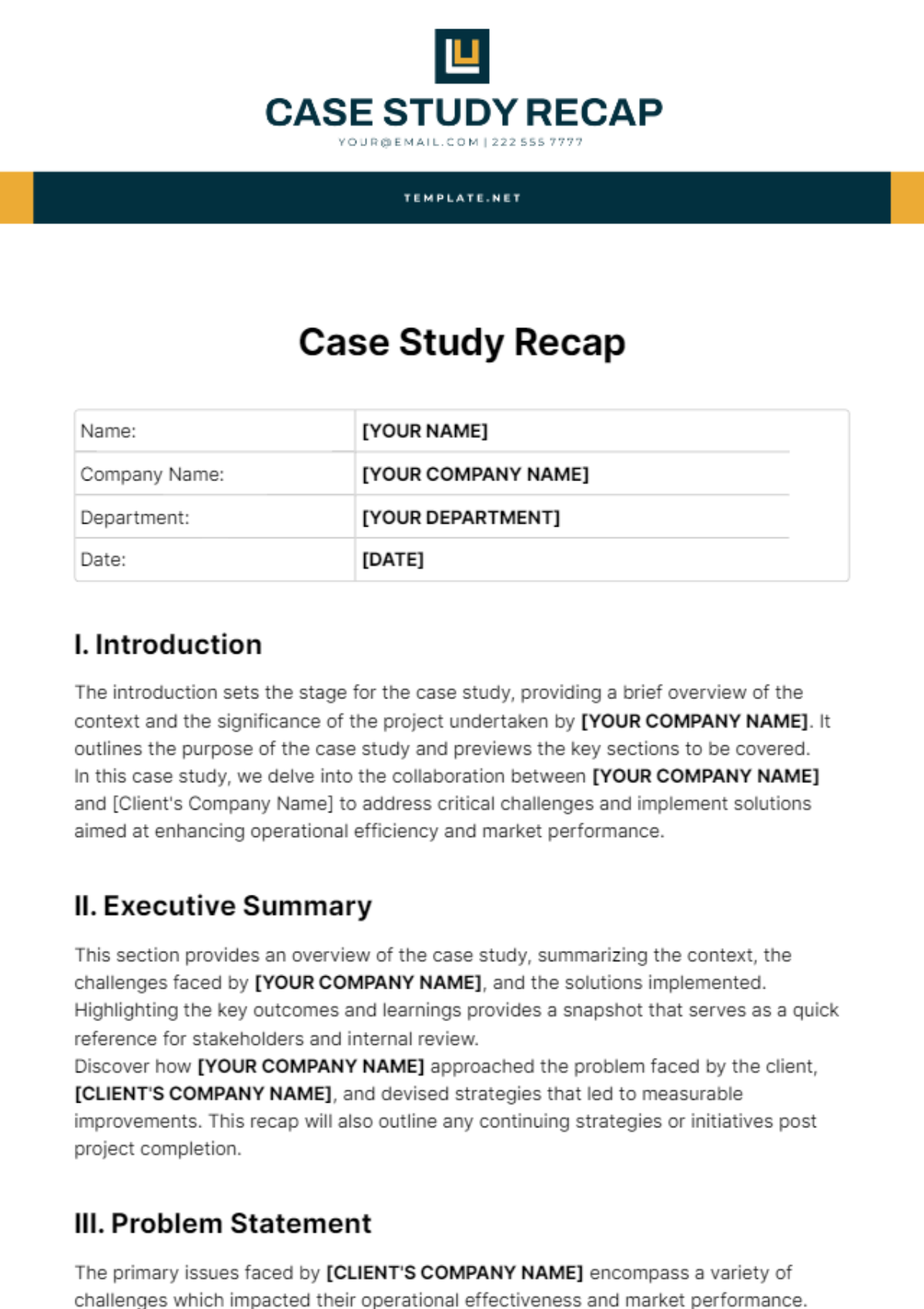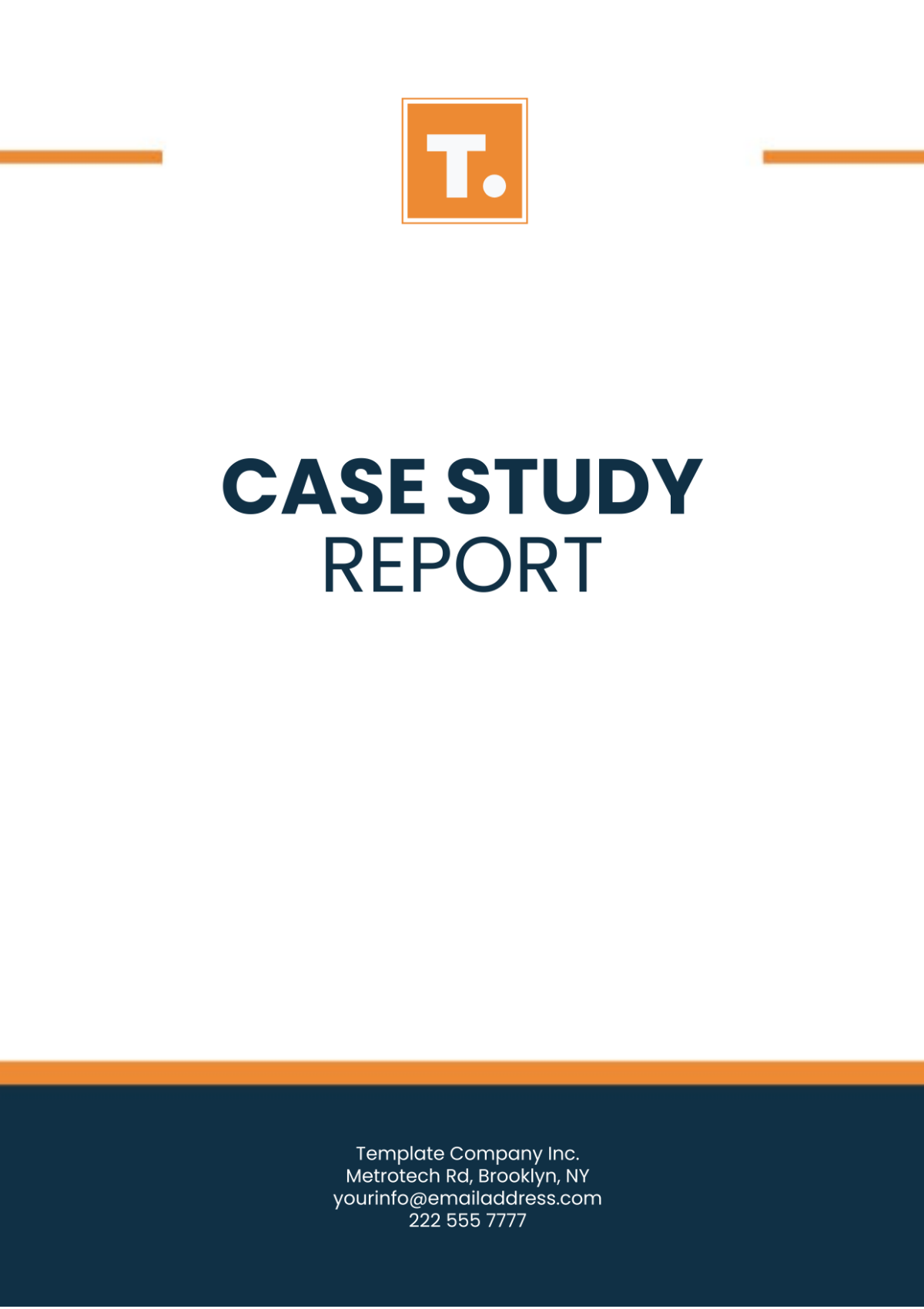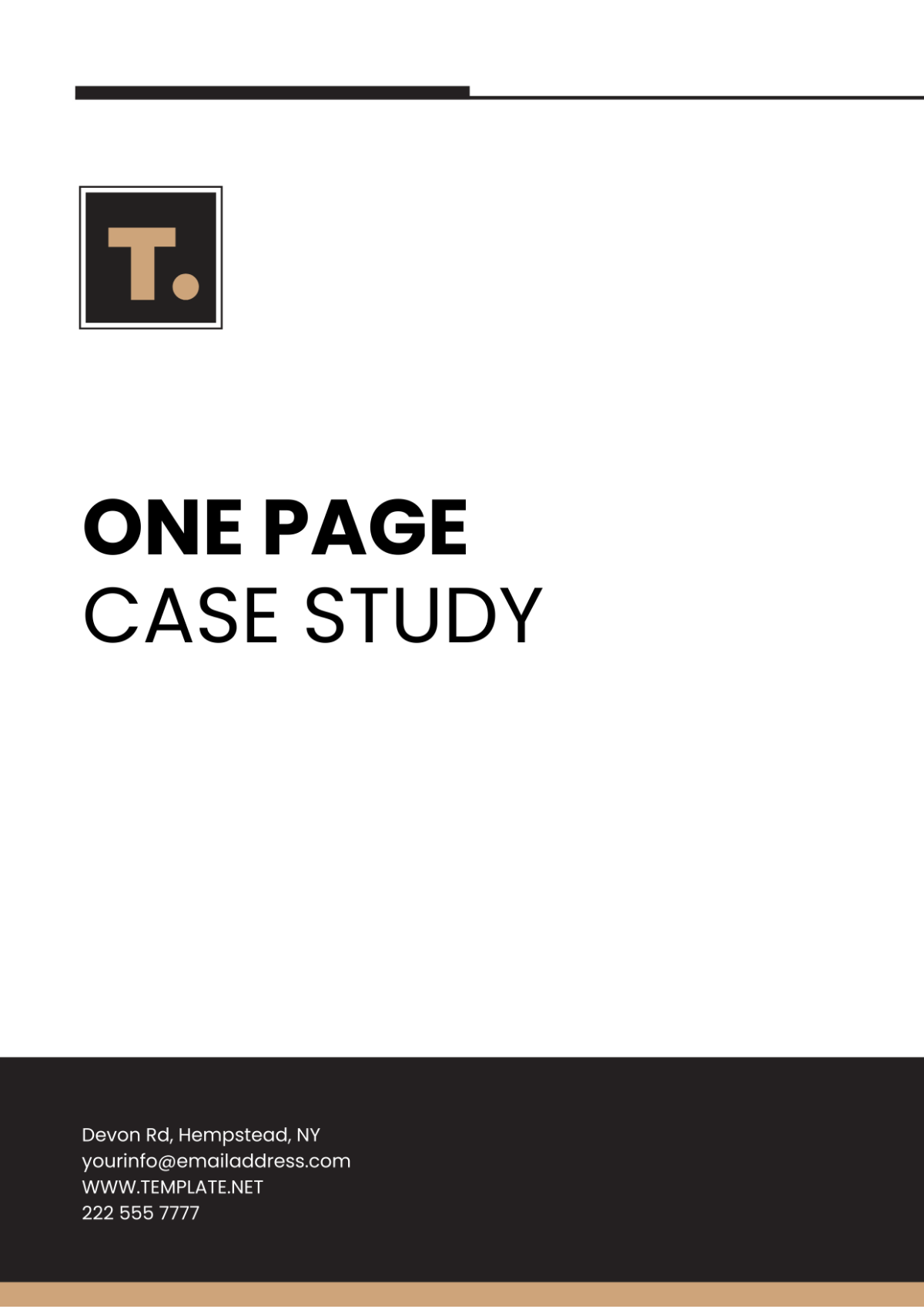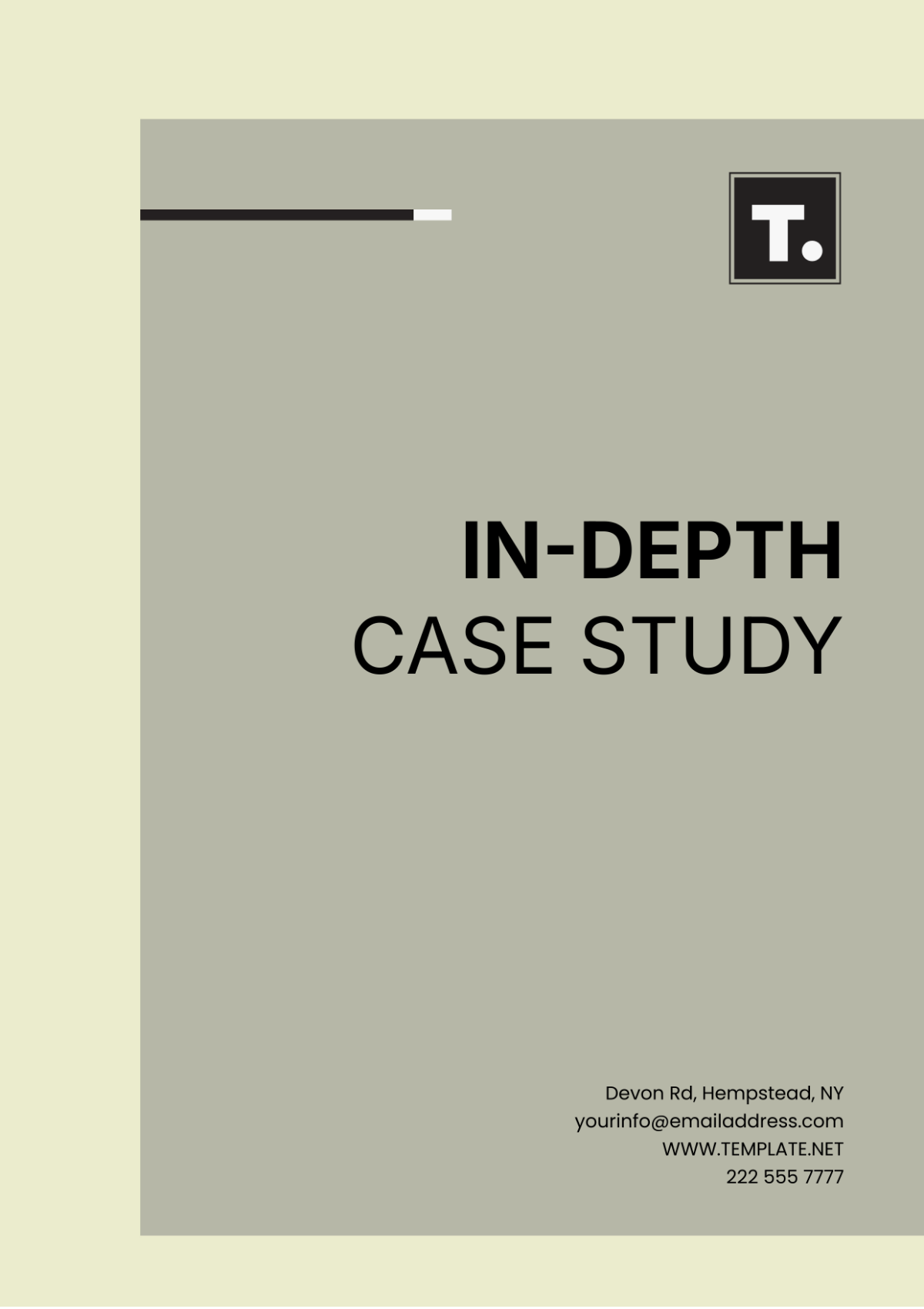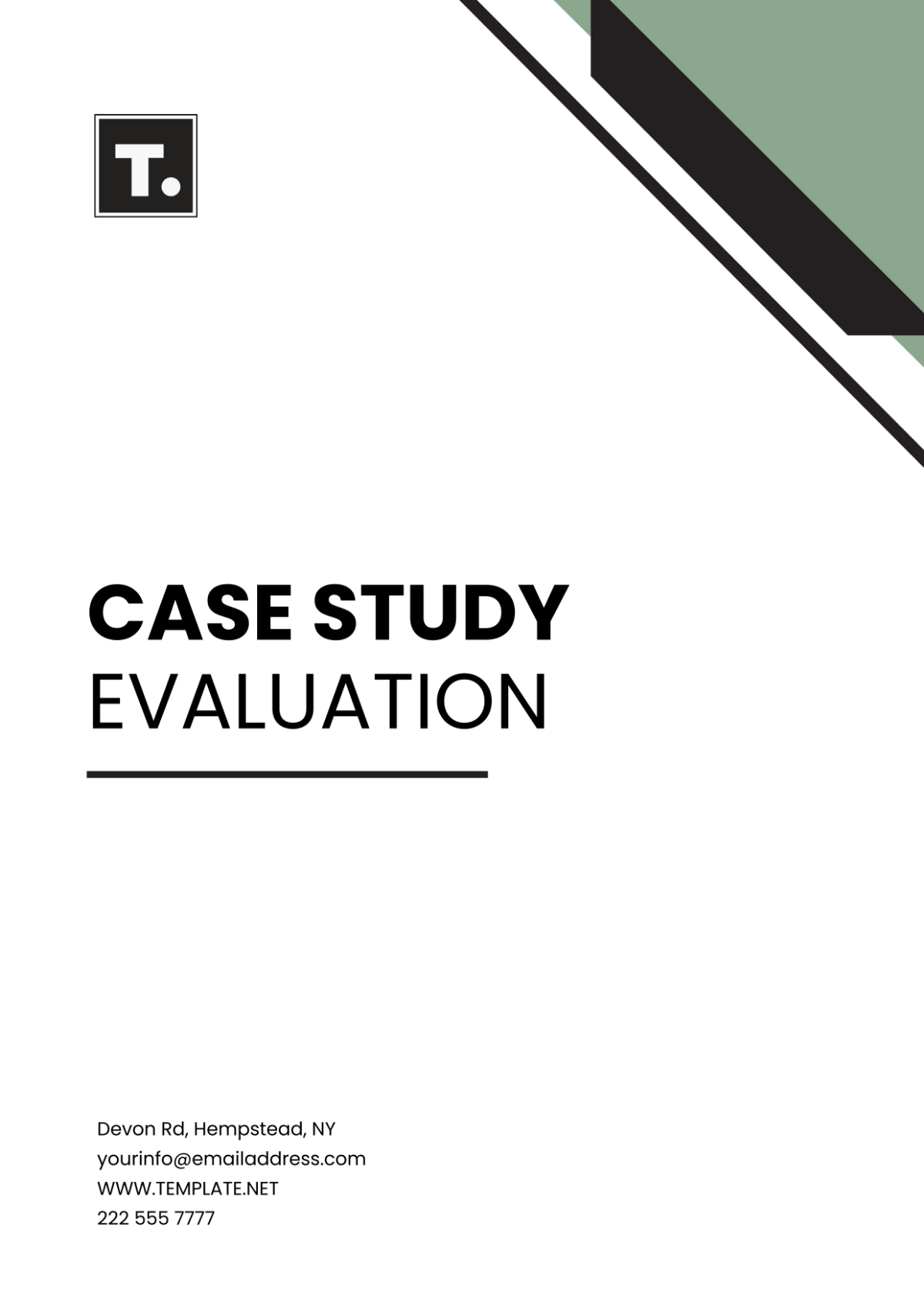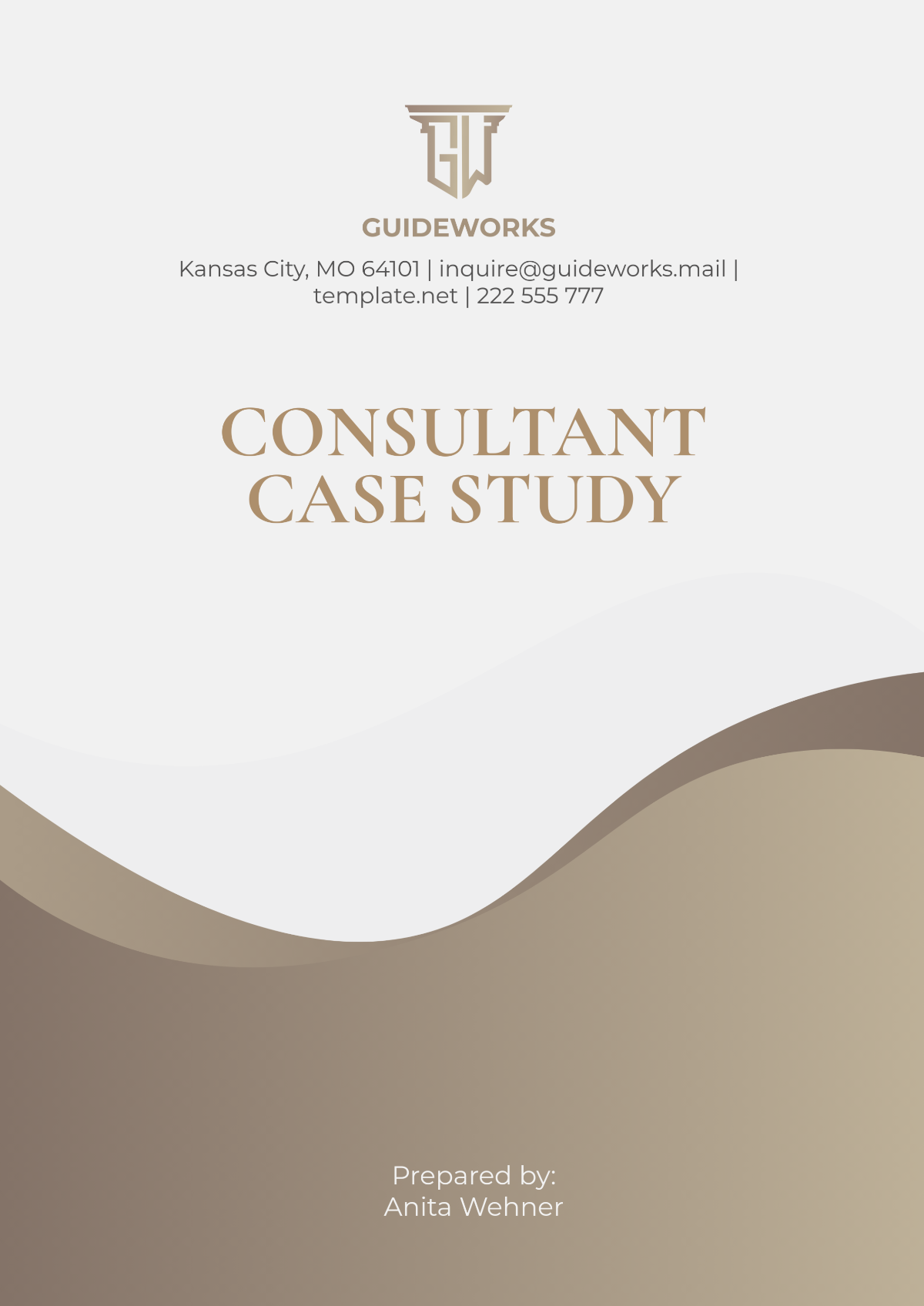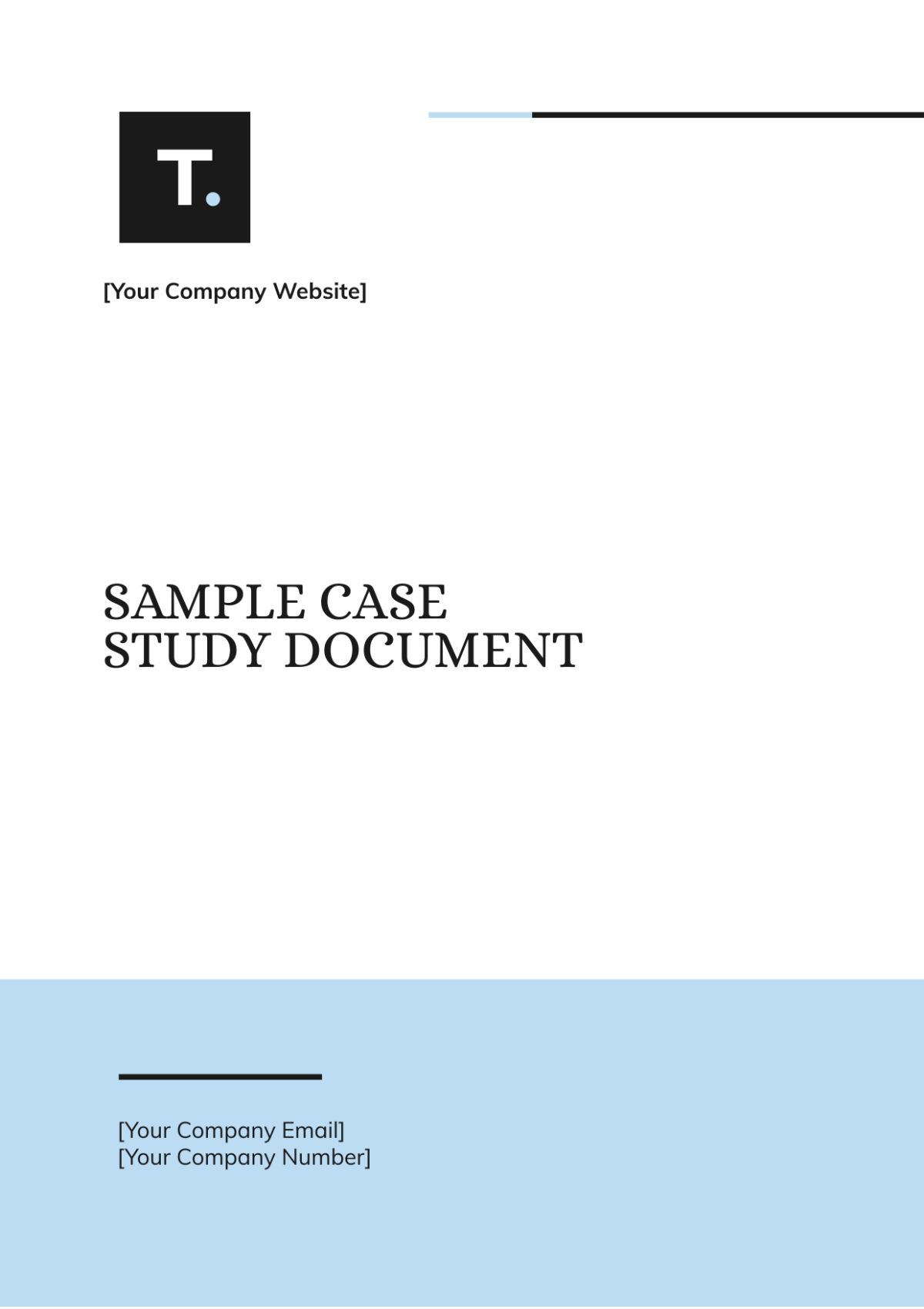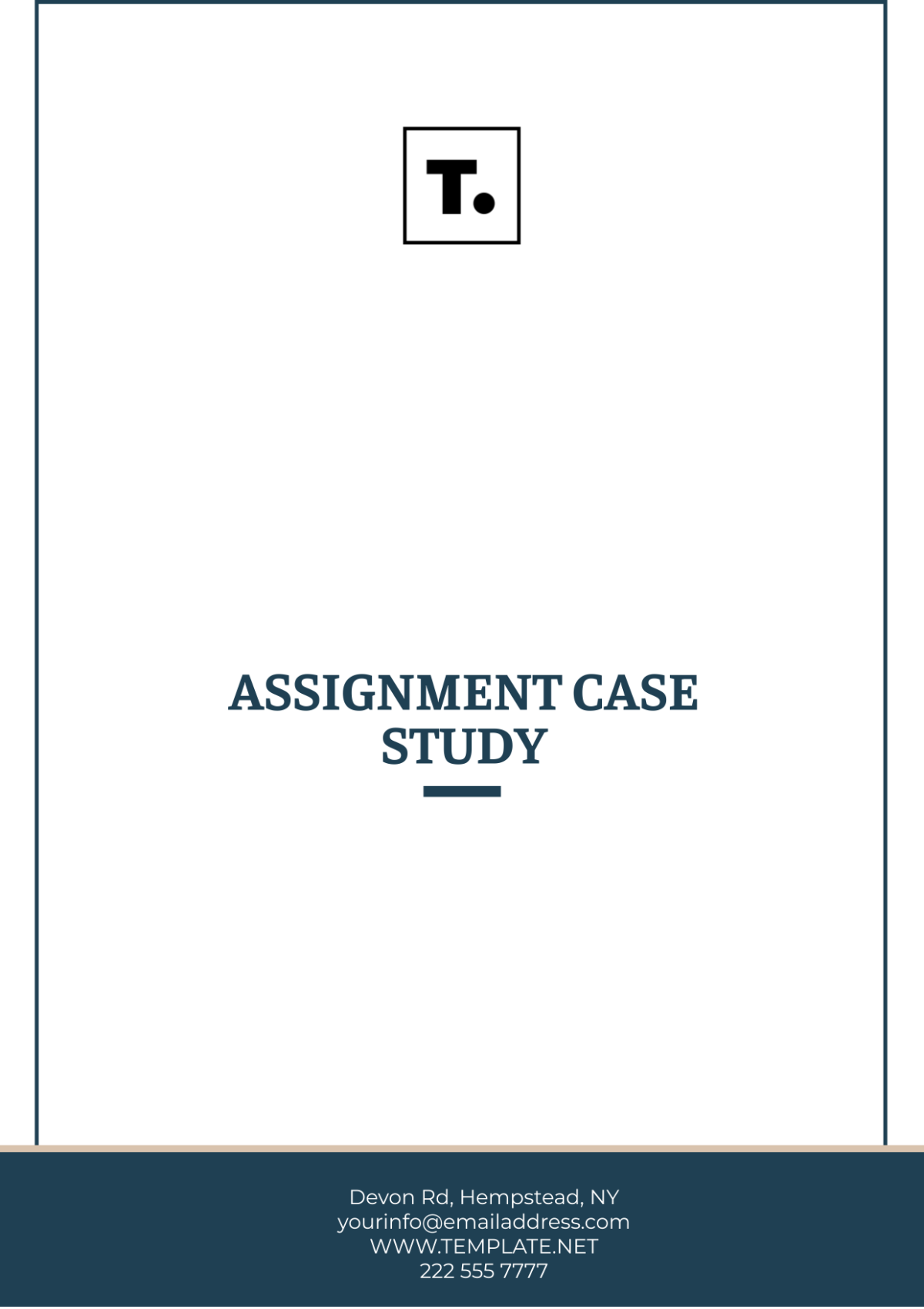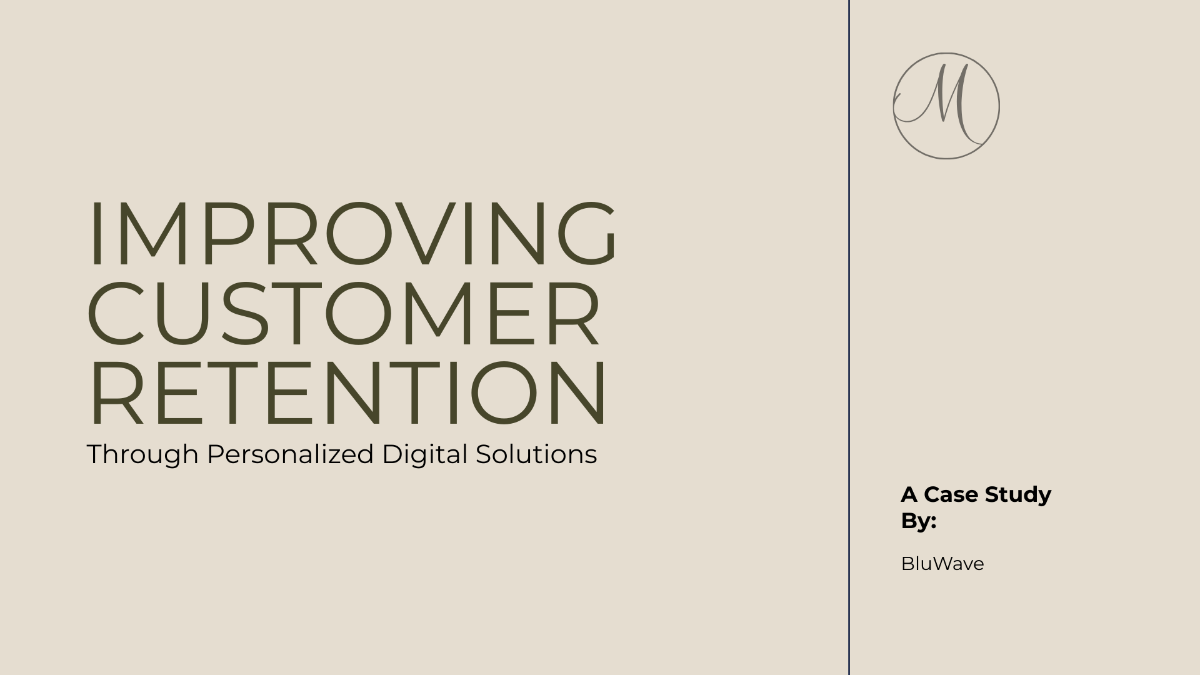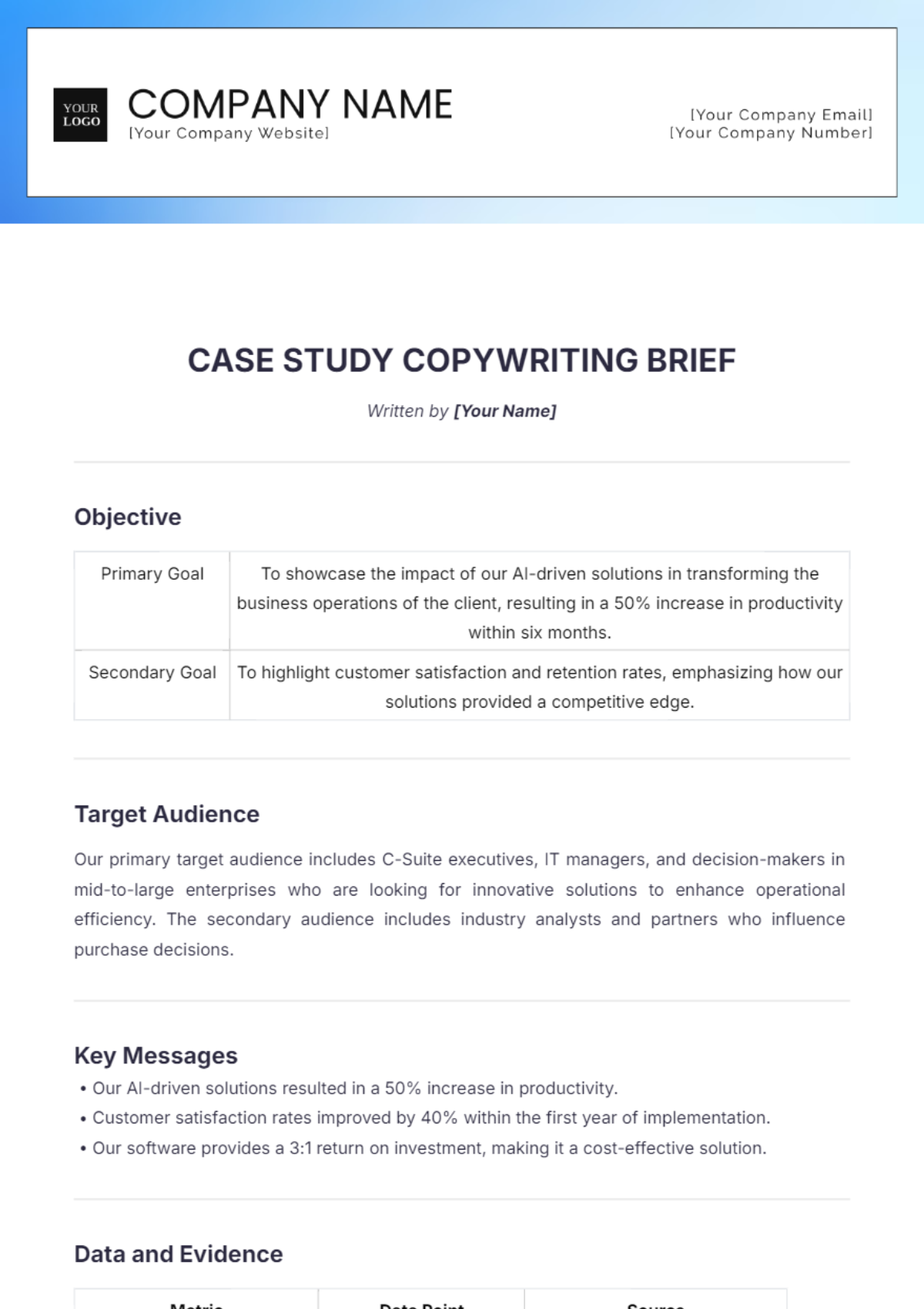Crisis Management Case Study
This case study was conducted by [YOUR NAME]. This analysis is a product of the organization [YOUR COMPANY NAME]. The intent behind this document is to review the crisis management strategies implemented during a critical incident, examining the effectiveness and areas for improvement.
I. Executive Summary
The following case study delves into a significant crisis faced by [YOUR COMPANY NAME] and outlines the steps taken to address the situation. It covers the initial response, stakeholder communication, and the aftermath of the crisis, providing a detailed analysis of actions taken and their outcomes.
This summary serves as an insightful overview for stakeholders interested in understanding the company's resilience and strategic thinking during high-pressure scenarios. The crisis, identified here as [CRISIS IDENTIFIER], was a turning point for [YOUR COMPANY NAME] in terms of implementing robust crisis management frameworks.
The case study not only reflects on what was done, but also offers a critical view on what could have been improved, setting a foundational learning point for future incidents.
II. Background Information
The incident occurred on [DATE], impacting our operations significantly at [LOCATION]. This section outlines the pre-crisis conditions and the triggers that led to the unfolding of the event. Understanding the background is essential for deriving insightful conclusions about our crisis management efficacy.
Several key factors contributed to the escalation of the crisis, primarily focusing on [SPECIFIC FACTORS]. The pre-crisis assessment also takes into consideration the environmental and internal variables that influenced decision-making pathways.
III. Crisis Description
This section provides a detailed portrayal of the crisis, documenting the timeline and the immediate effects on [YOUR COMPANY NAME].
Highlights include the initial detection of the problem, the immediate responses enacted by our crisis management team, and the impact on our operations and stakeholders.
Key events are listed chronologically:
Initial detection of the crisis and immediate response.
Steps taken by the crisis management team to mitigate the impact.
Communication with stakeholders throughout the duration of the crisis.
IV. Response Strategy
Following the identification of the crisis, [YOUR COMPANY NAME] rolled out a multi-tiered response strategy intended to limit damage and begin remedial processes.
This section elaborates on the specific actions taken by the department [YOUR DEPARTMENT], covering strategic decisions and operational changes made to navigate through the crisis. These strategies are presented in a tabular format:
Strategy | Description | Impact |
|---|---|---|
Immediate action plan | Detailed actions taken in the first hours of the crisis. | Evaluation of the results of the emergency measures. |
Long-term measures | Recovery and preventive strategies implemented post-crisis. | Effectiveness and integration into standard operating procedures. |
V. Evaluation of Outcomes
This part assesses the efficiency and effectiveness of the crisis response. Qualitative and quantitative metrics were used to gauge the success of the interventions by [YOUR COMPANY NAME]. Successes and shortcomings of the crisis management strategies deployed are discussed comprehensively.
Insights derived from customer feedback, financial impacts, and operational disruptions are discussed. Lessons learned from this crisis, including potential strategy improvements and response protocols modifications, are also depicted to equip the company better for future challenges.
VI. Conclusion and Recommendations
The crisis faced by [YOUR COMPANY NAME] tested the robustness of existing protocols and forced the company into rapid innovation in crisis management. This document serves to crystallize the understanding and the learning points garnered from navigating through the crisis.
Based on comprehensive review, the following recommendations are proposed for future crisis prevention and management improvements:
Strengthen the communication channels for quicker and transparent interaction during emergencies.
Revise and regularly test the preparedness plans across all departments of [YOUR COMPANY NAME].
Incorporate advanced technology tools to assist in crisis monitoring and management operations.
Prepared By:
[Your Name]
[Your Position]
[Your Department]
Contact Details:
[Your Email]
[Your Company Name]
[Your Company Address]
